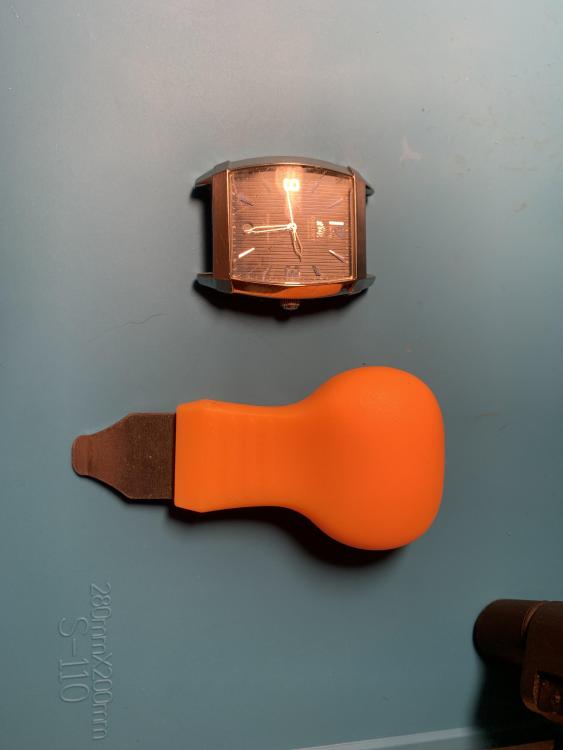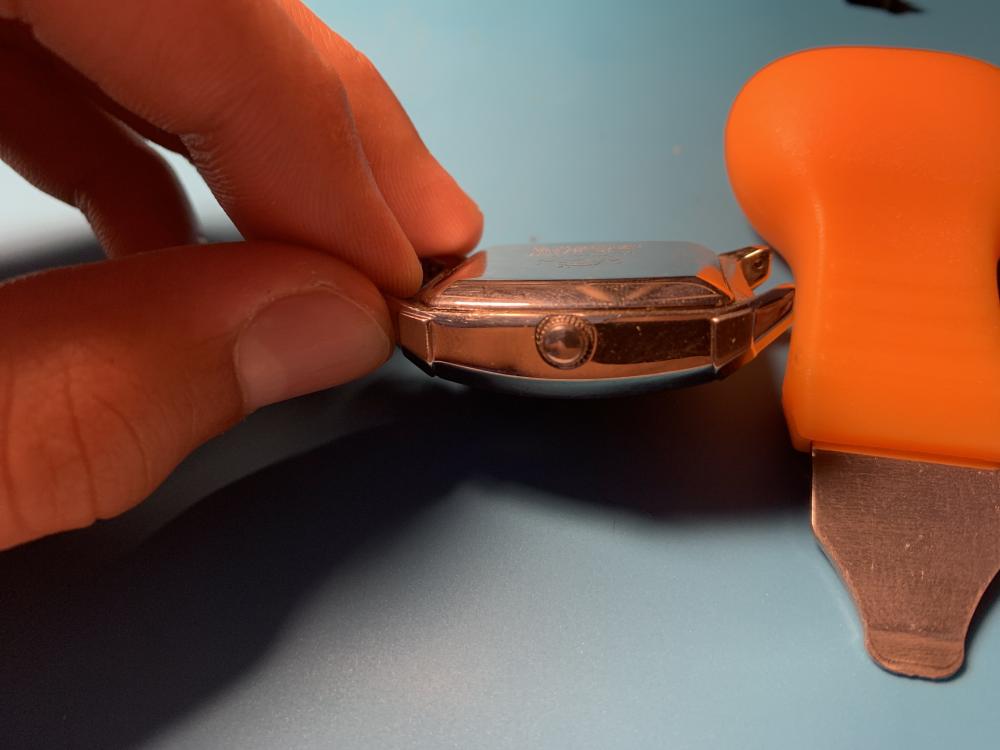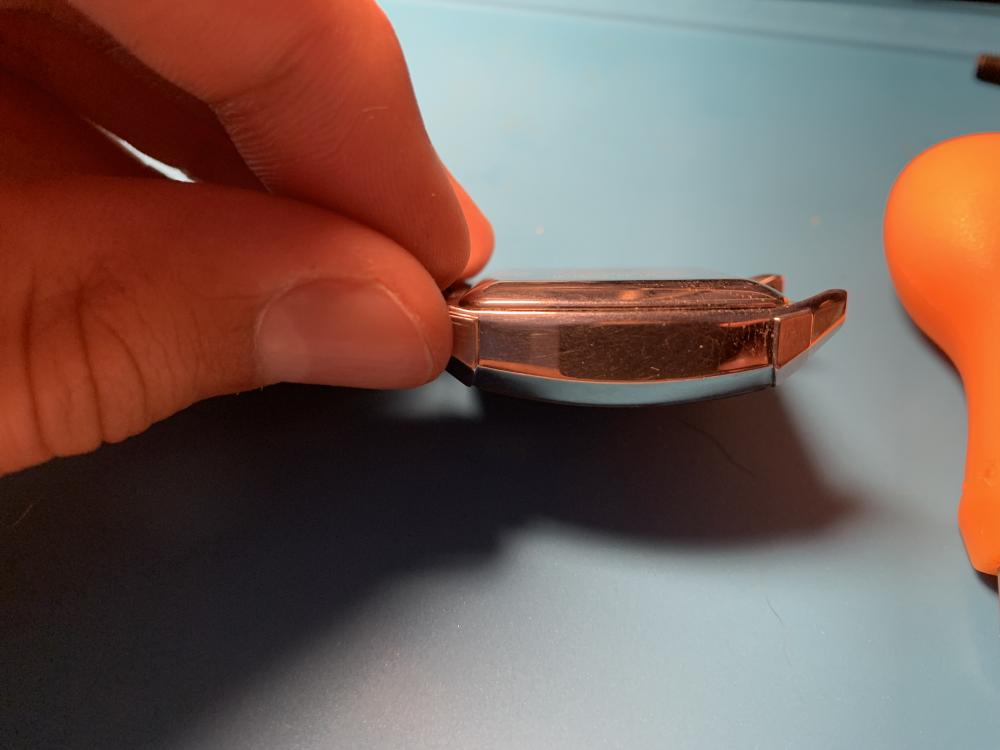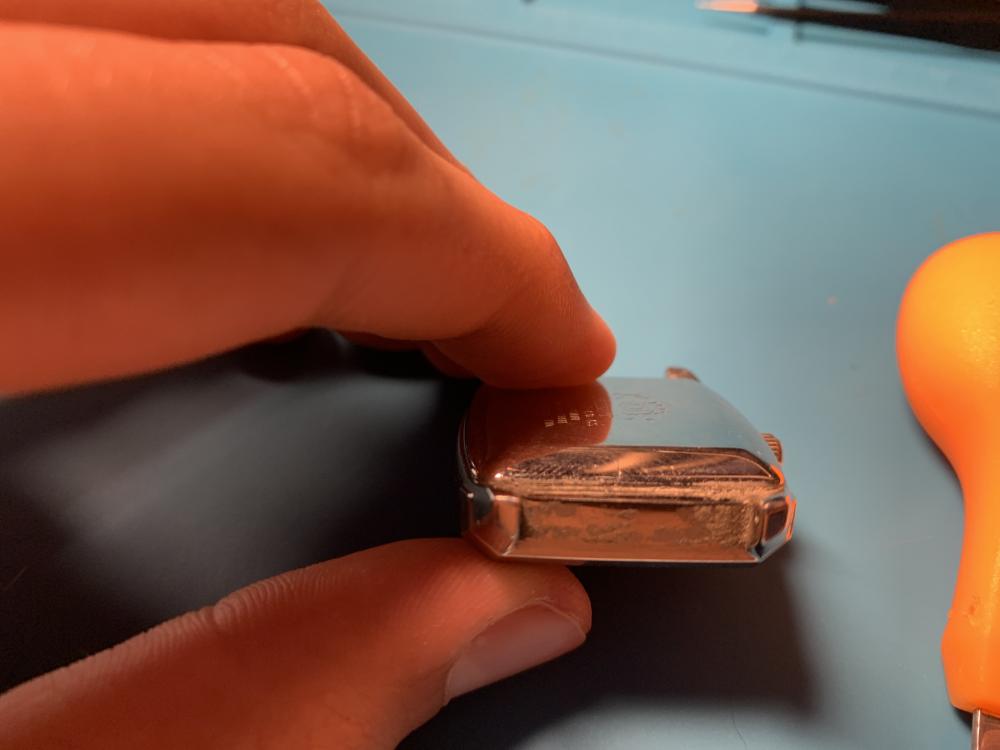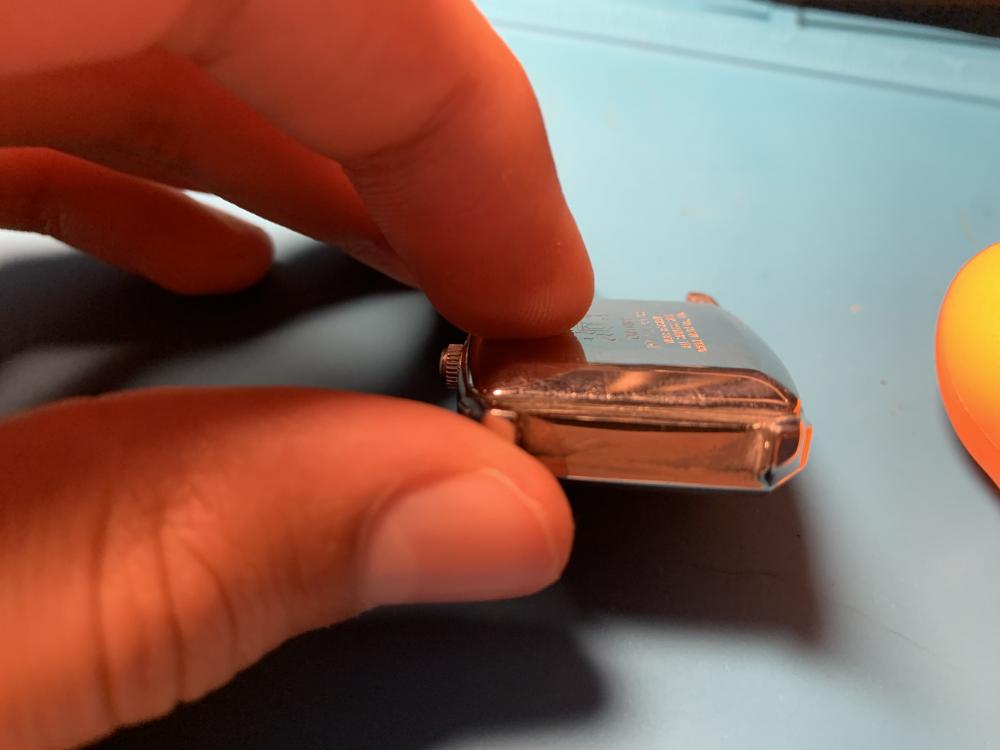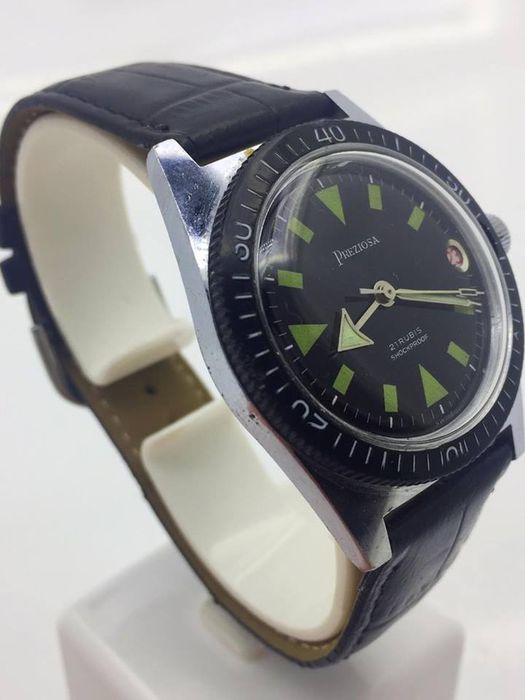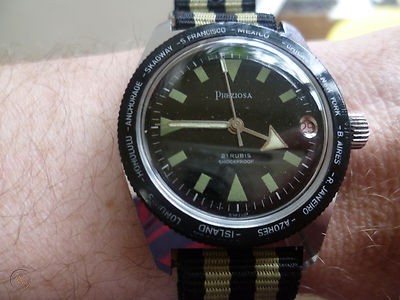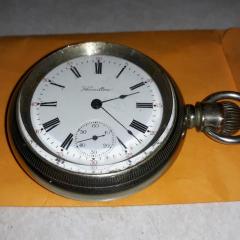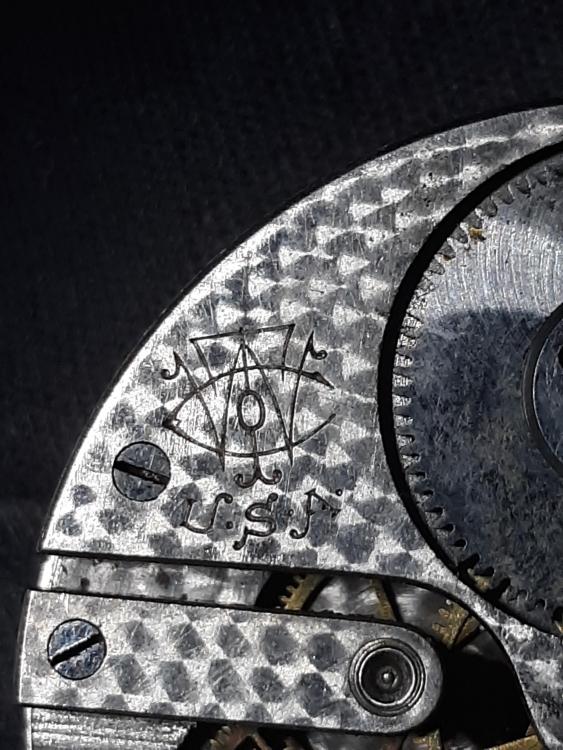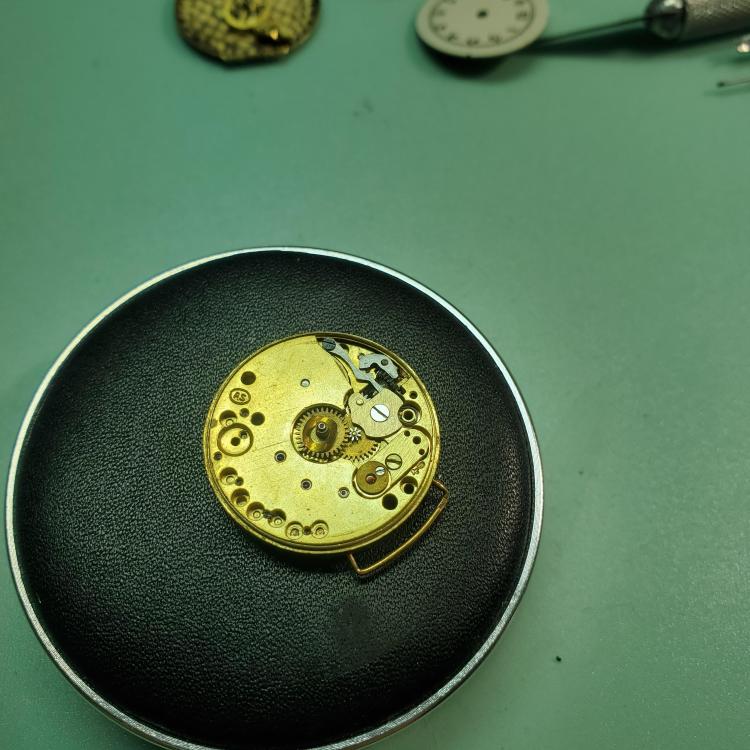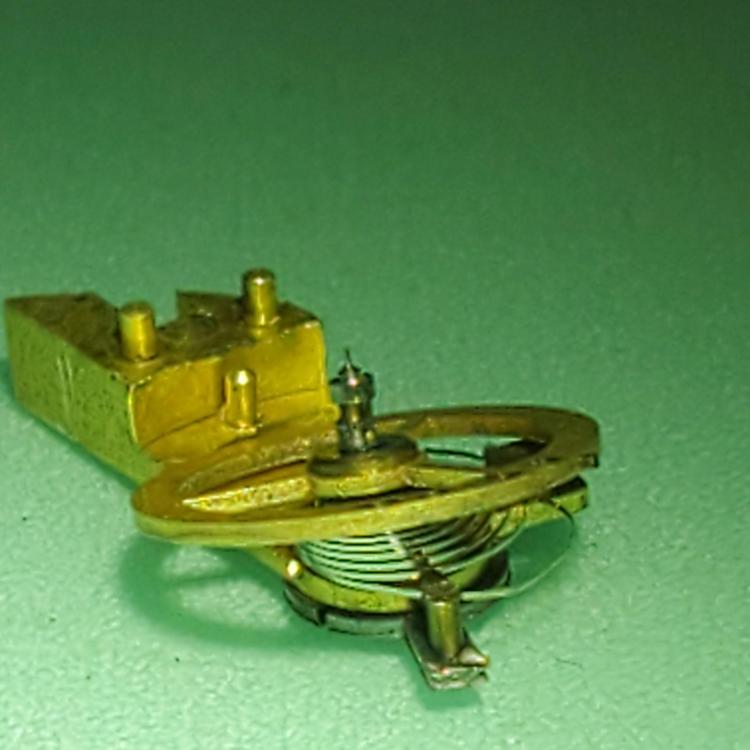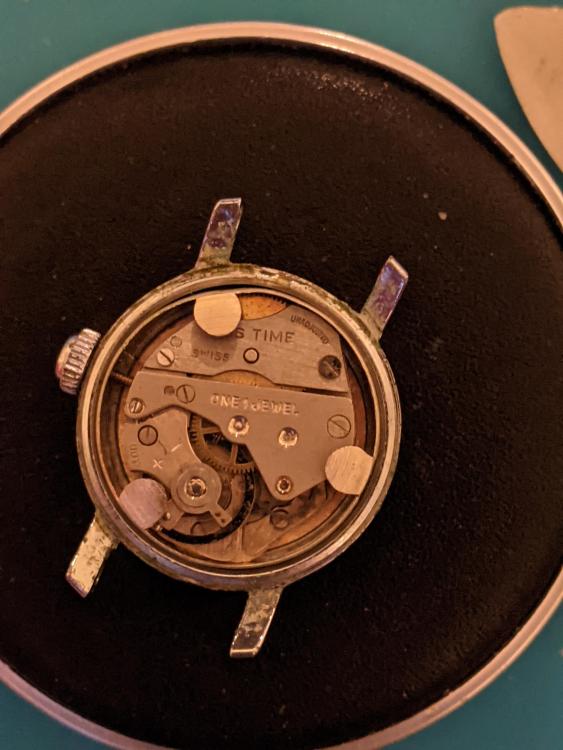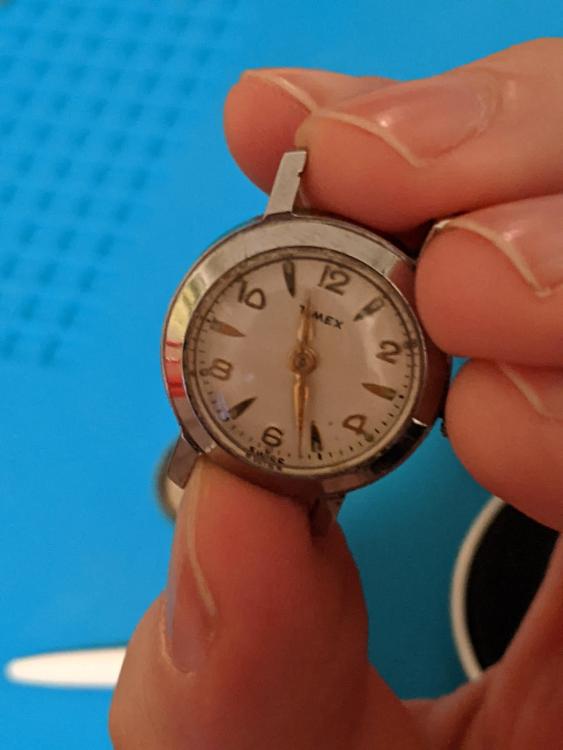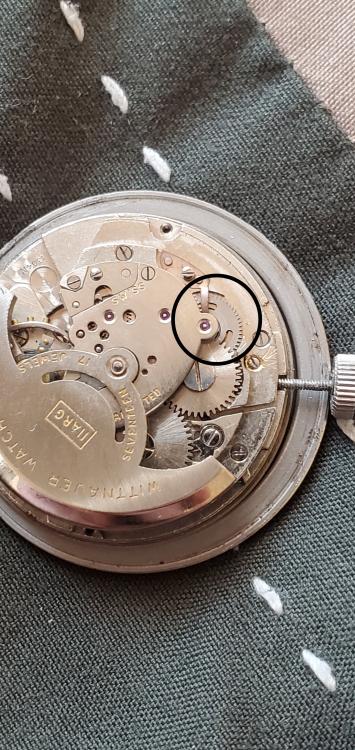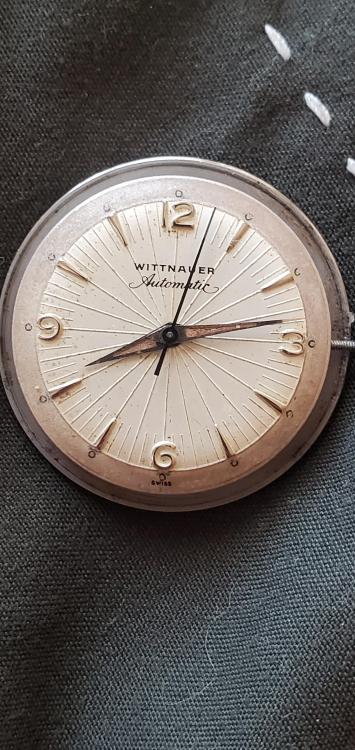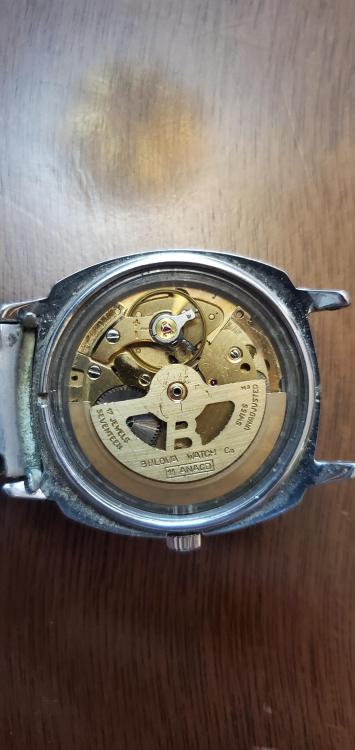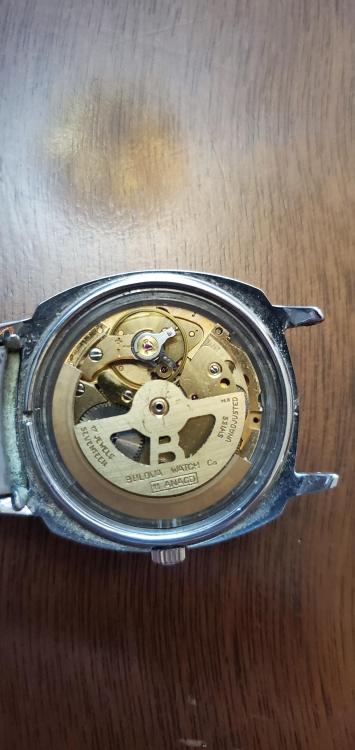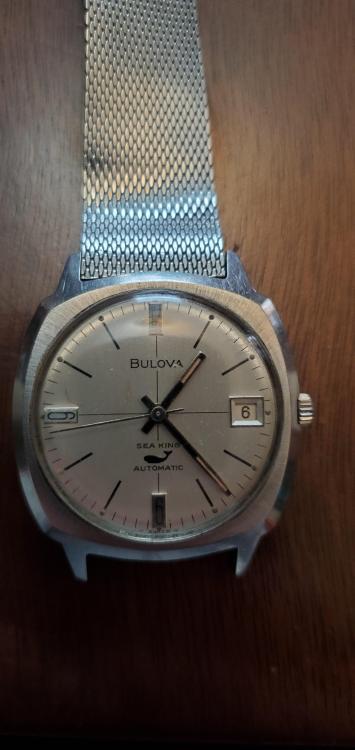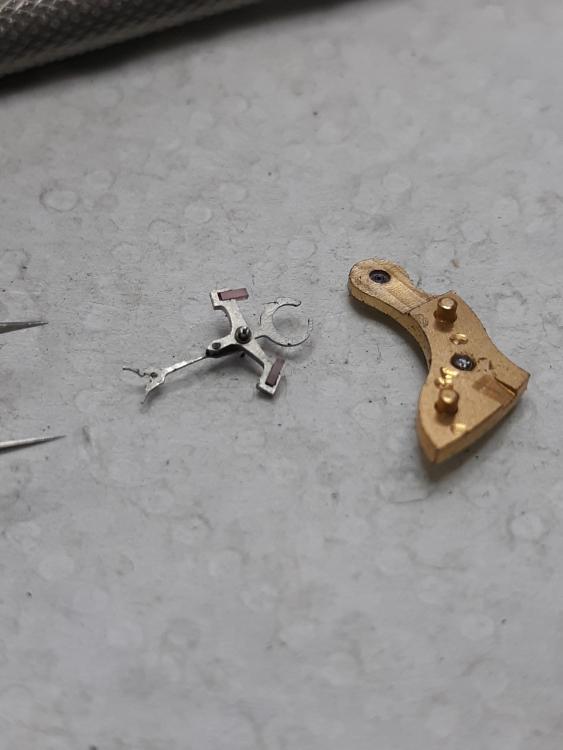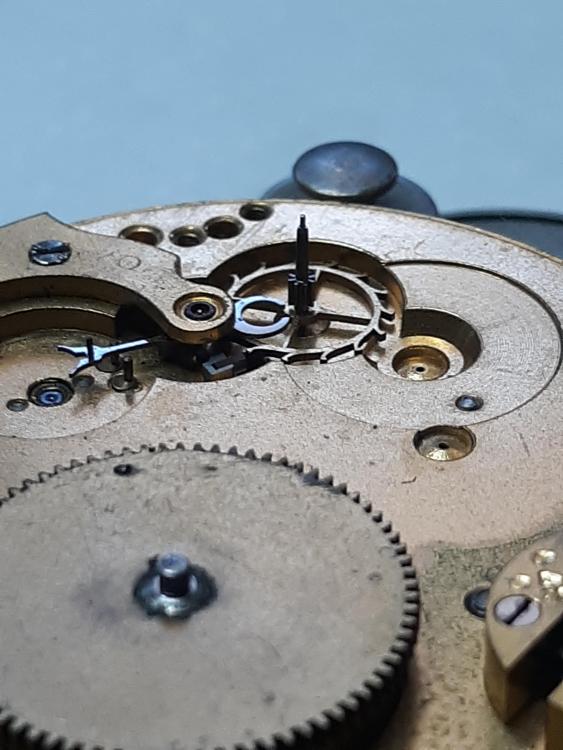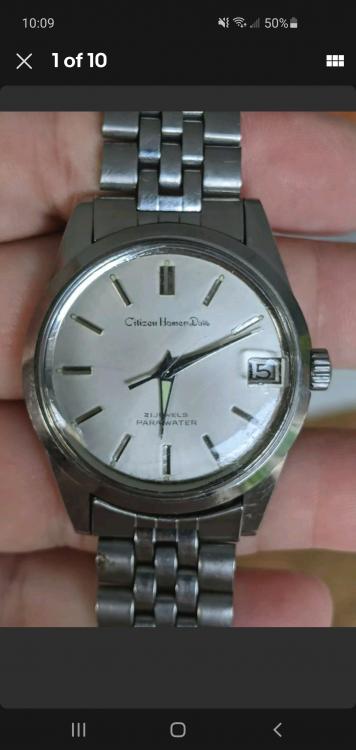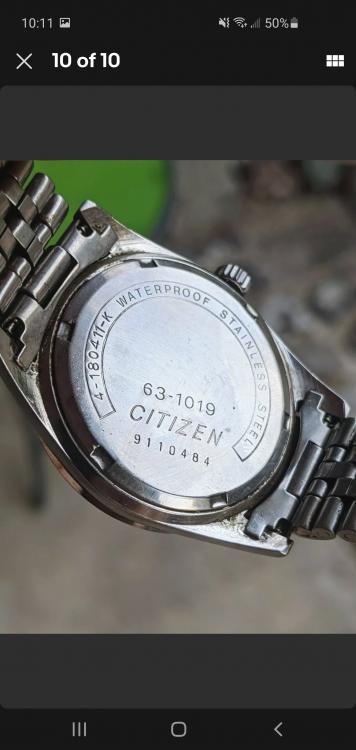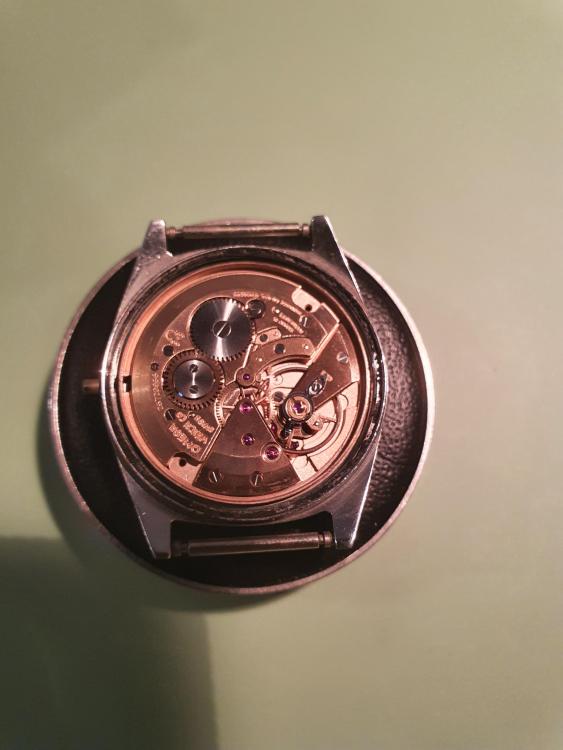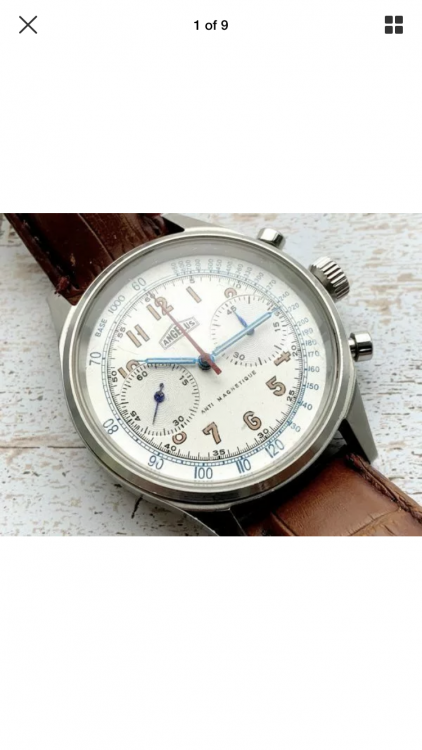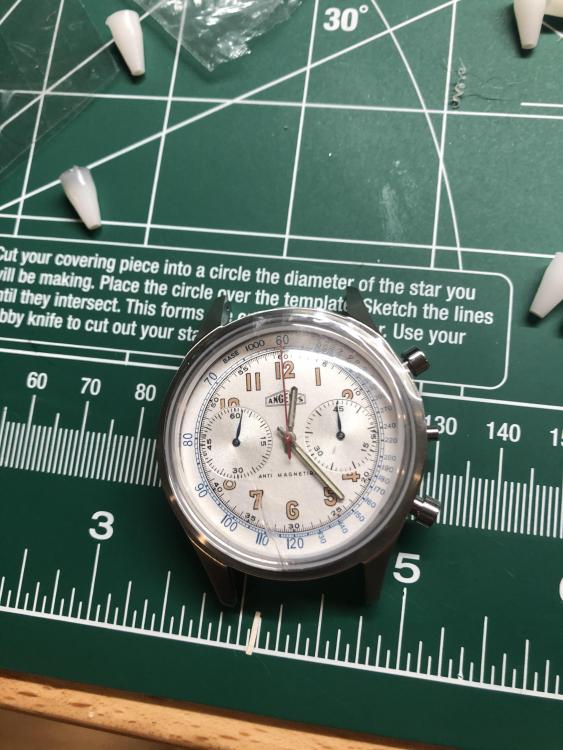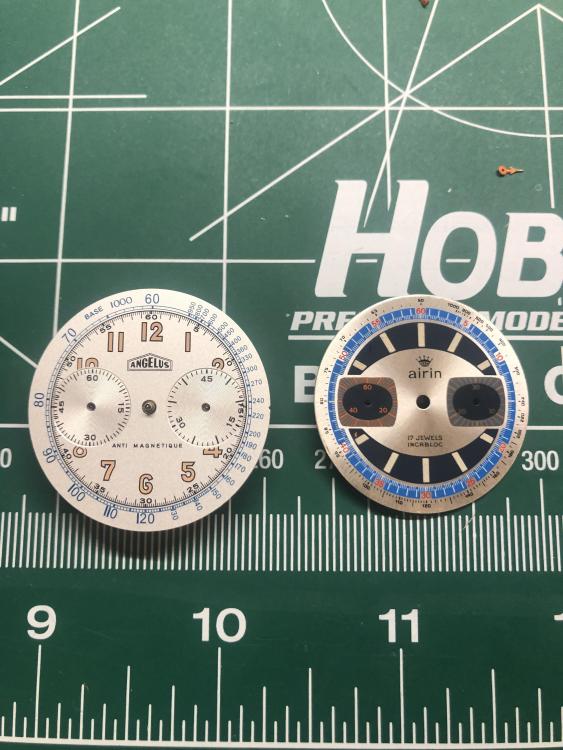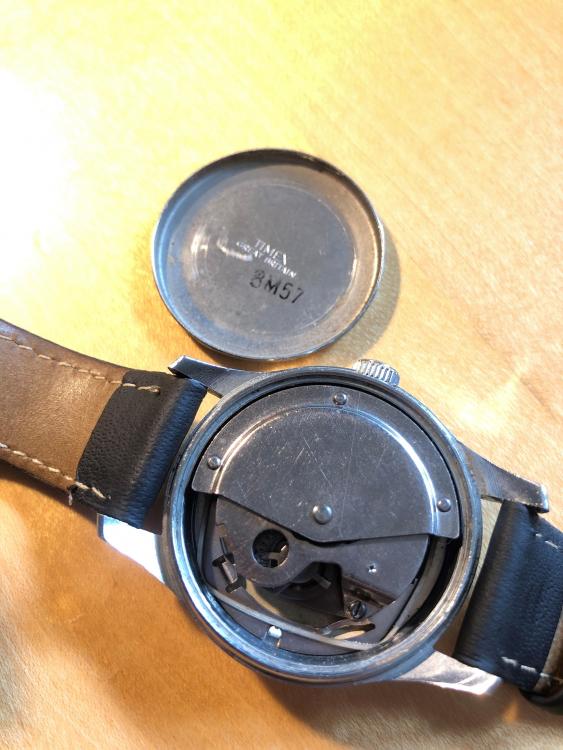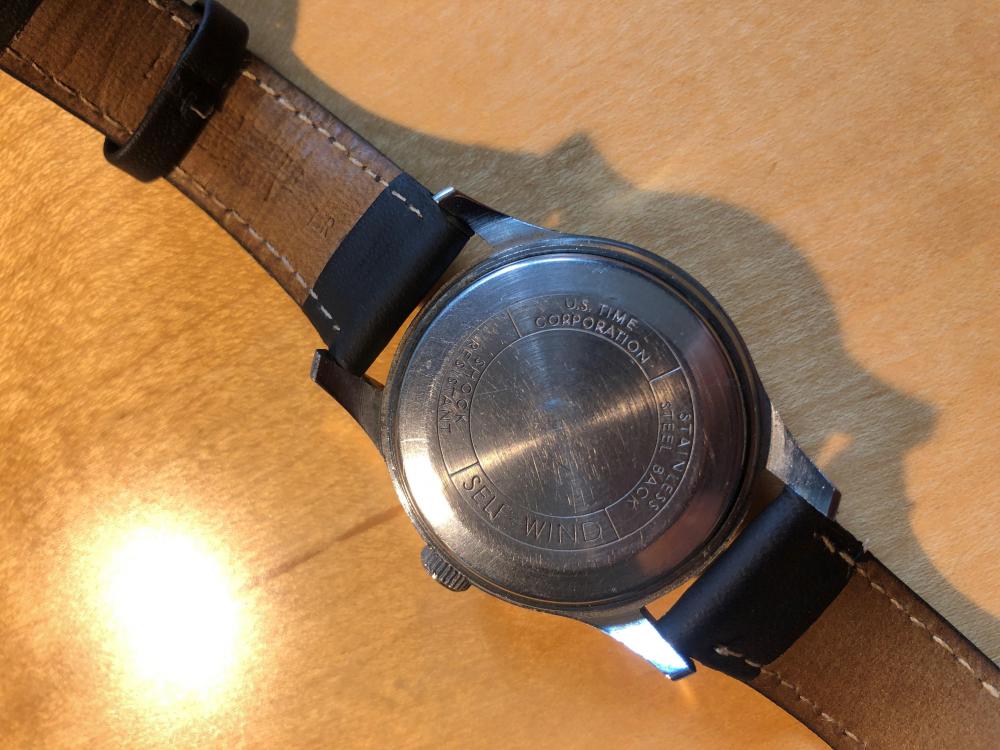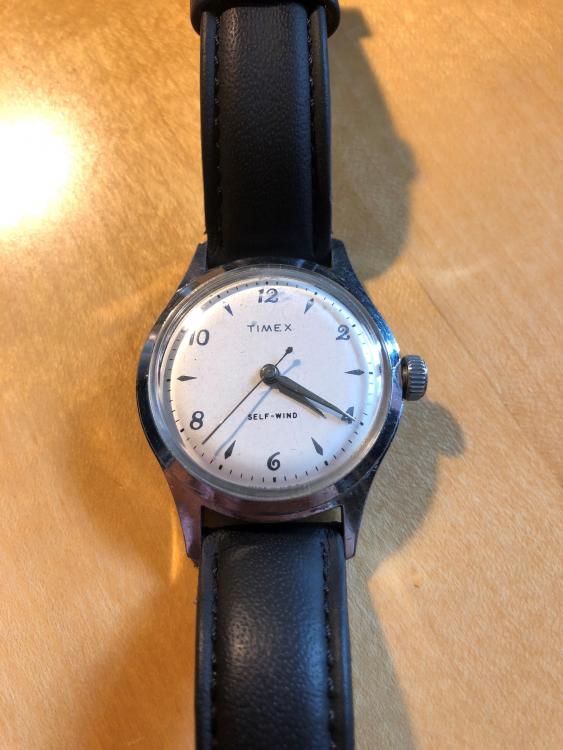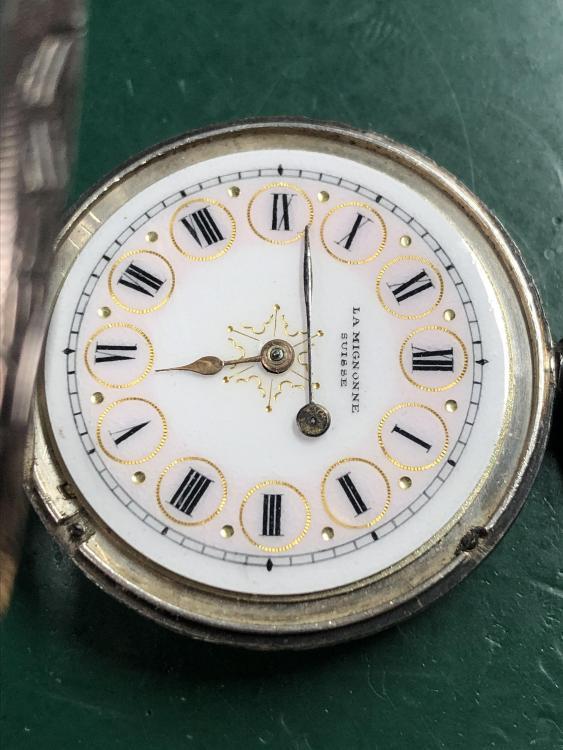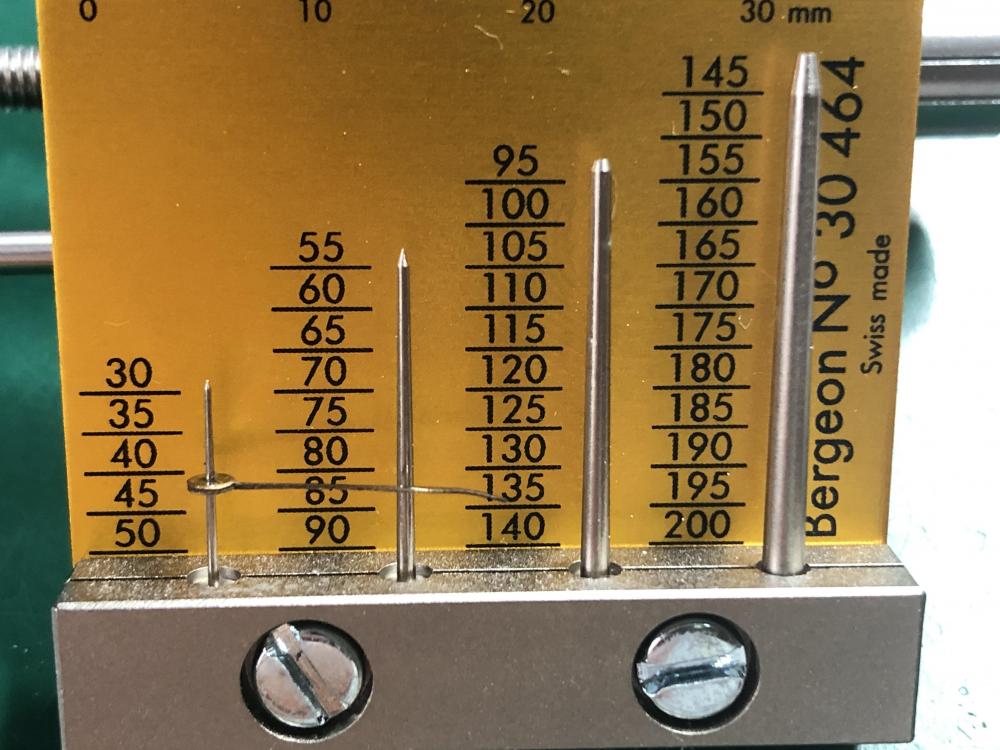Search the Community
Showing results for tags 'Vintage'.
-
Hi i I have this watch that was a wedding gift for my great great grandfather. he was German. I think it was around 1884 based on the stamps and some logic… So I saw that the double squirrel stamps and the numbers above the serial are of symbol to gold standard. The crown stamp is exportation to germany(I think) but still no matches that I found to trace the manufacturer. there is also the thinnest engraving that was scratched by hand that is too small so I couldn’t take a photo of it. But I believe it’s just information about service that was done to it. I tried looking for a match on this stamp that says “cb” but couldn’t get anything. also the “cb” logo appears on both the dial “door”, the back “door” , but not on the movement’s “door” (I’m calling it a door because I don’t know the term). please help!!
-
Hello again watchbangers! Here I am again with my newest project I had on my table with the appropriate walkthrough for anyone in the future! If you do not want to read everything, here is a link to the full Youtube Video: https://youtu.be/Fw2DmVTBdxQ Now it was only a matter of time until something really patina-ed would find itself to me and this was it! My very first pretty nicely patina-ed dial! I have had plenty of patina-ed watches before, with all kinds of horrible patina ( or damage), so I really grew fond of this “nice „ one while working it it! Ironically its a Dugena Tropica ( hehe) which is in rather good condition! From the outside the large issues were the extremely gunked up areas around the crystal as well as the battle scarred crown which would need a replacement! And the watch was ticking! Funnily enough, the case back revealed the habit of a previous owner wearing this watch on a nato strap for quite a while I think ( With the marbled pattern on the metal) ! Now opening the watch revealed many previous marking on the inside meaning that this watch was probably cared for well and a very pretty perlage finish ! The inside revealed a fairly simple movement with a pretty blued balance spring and nicely polished screw for the ratchet wheels ( even if they don’t look like that on the picture). There was a fair amount of dirt stuck to the case holder ring and in the thread of the case back, so I will clean that out with an ultrasonic before putting the serviced movement back into it! I released the movement from the case by unscrewing and taking out the movement clamps ( they where a real pain to work with) and plopped it out onto a cushion to take a look at the state of the dial. The dial had a nice hue to it with a few blobs of deeper colours scattered around the center. For some reason, there was a higher scale of “degradation” on the right side. Maybe there was more moisture there? Or more sunlight? If anyone maybe has a clue why this happened please comment! Otherwise its cool to realize that the hands used to be a bit too low on the dial as you can see the circular scrape marks of the hour hand which probably took away some of the patina! When I checked the hand height however, it seemed like someone fixed that issue already in the past! The indices as well as the hands looked sharp and I might just polish some grime of them with some pith wood later. Taking of the dial and the hands reveals a petty complicated dial side at first but after a closer look is basically an older version of the typical eta calendar system nowadays. So I start by taking of the hour wheel with the friction spring, the cover plate for the setting wheel and the wheel itself. As the cover plate was also keeping the date ring in place, I can now remove that aswell while also not forgetting the date lever and its spring. Thirdy I took off the date wheel which pushes the date ring one day further. Now I know that it works on a similar “spring” concept as I also removed a spring lodged underneath it but I somehow cant wrap my mind around the exact method yet. Then I removed the newly revealed cap jewel ( love those) for the escapement wheel. Then I took out the setting cover plate and then yoke, the clutches and the yoke spring. The setting lever was screwed in from the back side so I will just unscrew that later. Don’t forget that! With that done, we can switch to the back side of the movement and take off the balance wheel first to make sure that we don’t accidentally damage it when further working on the watch. That also revealed the caliber number which turned out to be the ETA 2408 movement. Then we take of the ratchet and winding wheel with the click and the click spring , which where lying in the milled groove beneath, which I found pretty neat, the click also had a cool curved shape which I like, you can see that in the video. Off goes the train wheel bridge revealing the simple gear train. Then I took out the gear train as far as I could, so the seconds-hand wheel, the third wheel and the escapement wheel. I took of the pallet fork and its bridge in the same step.. Then I turned my attention to the last two “wheels” and revealed them by taking of the barrel bridge. I removed the barrel and the minute driving wheel ( which basically hooks through the entire plate to the front side and drives the minute wheel.) With that the movement was basically disassembled and I had a quick peek at the shock systems. This watch interestingly had a screwed down Inca-Bloc on the main plate side, I wonder how that would work when adjusting end shakes? I took both jewel packages out for the cleaning Now after cleaning all the movement components in a 1:2 ( Cleaning / Rinse) cycle with Elma WF Pro and Elma Suprol in my trusty Glashütte cleaning machine I reassembled the watch by following the steps backwards and lubricating on the way! Here is list of which lubritation I used where: Moebius 9010: Escapement wheel, seconds hand wheel, jewel caps. Moebius HP 1300: Mainspring Arbor, Barrel pivots, minute wheel (both), minute driving wheel, Pivots for transmission and setting wheel and contact surface of the date lever. Moebius 9415: Pallet fork jewels Molykote DX: All strong friction points in the gear less works and on surfaces which showed high stages of wear. After the reassembling the watch and lubricating everything I slapped it onto the timegrapher. Of course I demagnetized it before. The dial up side had an alright rate and beat error however I am unhappy with the amplitude. As I didn’t have a spare mainspring, a new balance spring or the ability to manipulate the palettes, I just hoped that the amplitude would rise a bit after the watch had run in a bit and would maybe even gain a bit more through the tension of the case clamps. I also replaced the crystal with a one and cleaned up the grimed up case with some physical force and an ultra sonic bath. The final product was this beauty: This project was a fairly simple one! However pressing in a tension ring crystal was a first! It defintly felt weird pressing down on an acrylic crystal haha. Otherwise it is a bit frustrated not being able to physically influence the ampltiude other than by replacing parts. I will definetly be looking into getting a heating plate and some tools soon so that I man manipulate the escapement! Gotta get those degrees up! What I also found really cool is that I could see a previous version of the modern Eta date wheel! It was like a little time machine going back 40 years! Anyways.. I am rambeling on now so I will cut it short! I hope that this post helps anyone in the future and I am sorry for any misinformation! I am not a professional of any sorts and am just doing my best! If you guys have any thoughts, comments and complaints, please comment!
-
Hi everyone ! I recently acquired a vintage Seiko 5 7009-316A, which I’ve restored and serviced, including the restoration and repainting of the hands.This watch is quite unique in my opinion, as it features a bezel design painted directly onto the crystal. Unfortunately, during the restoration process, the beautiful cream-patinated crystal cracked because it was too old...It was a real challenge to source an original Seiko replacement crystal, but I finally managed to find one. However, I feel like the watch has lost some of its charm without that gorgeous aged patina on the painted design, and now it's just plain white.. To try to replicate the original look, I recreated the design exactly as it was (even replicating the original font by hand!) using Adobe Illustrator. I then turned the design into a sticker. One of the biggest challenges was that the sticker needed to adhere to the inside of the crystal, not the outside. This meant the adhesive side had to be on the colored surface. I created a mirrored transparent sticker, applied it to the underside of the crystal, and the result looked promising—at first. Sadly, after just a few days, the sticker started peeling off, and I realized this solution wasn’t viable long-term. I’m now at a loss for how to properly recreate the painted crystal. I’d love to know how original painted crystals like those on the Seiko 7009-316A are manufactured. For example, similar designs can be seen on the Omega Speedmaster Mark IV, which has a tachymeter painted on the crystal. If anyone has experience with this or knows of any professional methods to reproduce this type of crystal, I’d greatly appreciate your advice! Thanks in advance!
-
Hello everyone - I’m a new member to the forum. I’ll complete my profile shortly, but will note that I’ve recently gotten into oversized vintage watches. This question relates to a vintage Tissot Antimagetique, and am curious if anyone has encountered this issue - I wind the watch until I feel the resistance, but that point is not a full wind. I’ve found that in order to get a full wind, I have to then pull out the pin and then push it back in (or give it a gentle shake), and then I’m able to continue winding until I get to a full wind. I’ve had the watch serviced, and no issues found that might explain this. Has anyone seen or heard of this issue - having to pull/ push pin or shake mid-wind in order to get a full wind? Thank you
-
The acrylic fell out. I've seen videos of how to refit round ones, but not rectangular ones. This has a small flange on its base. Any suggestions gratefully received. The flange at the base of the acrylic is too large to fit back into the watch. I think this will involve dressing the flange off, and gluing the acrylic in. This is annoying, my mobile lets me know that there was a reply via email. I can read the replyb on the email, but nothing is showing on the forum. sigh. Now on my laptop, and it's the same problem.
-
Hi guys. I’m curious about this Tudor I got. I’m not sure the model number or something like that to try to estimate a market price. Any help is really appreciated.
-
All, I have acquired what I believe to be a WW II era wristwatch. It was "made" (offered?) by Mulco. The movement is an FHF 150 (with sweep wheel/center seconds). The case is from "ID" (which is why I believe it to be WW II era). Here is the face - still cased... Here is the inside of the case back... The dial side uncased... And the back (uncased)... I am not familiar with this movement at all. It's the first time I have seen an FHF. It's also the first time that I have seen (in person) a movement with a sweep wheel. I have ordered the Bergeon/Presto puller for odd number spokes. I assume there is isn't anything too strange with these old center-second movements other than the sweep wheel (removal and replacement). But would appreciate any info, cautions, warnings etc. that I might need if attempting to service myself. It's not a family heirloom or anything, but I don't want to kill a vintage movement. Also curious about watch itself if anyone knows anything about the original Mulco company and it's watches. Kind Regards, -Paul
-
Hi, my name is Danny and I am new to the watch repair community. I have very loose terminology and know-how so if I make a mistake when speaking about any sort of topic about watches, I apologize. I got into the watch community / watch repair community because I find the movements and different movement of vintage watches fascinating. The different combinations of movements, dials, cases, and bands also interest me and I would like to know more about the movements of watches.
- 2 replies
-
- introduction
- vintage
-
(and 1 more)
Tagged with:
-
Hello everyone I’ve just got into the hobby of watchmaking and I’ve been struggling all day trying to open this watch it’s seriously been a task and yet with no success it’s a Orient KY PFAJ-C0 CS it’s a somewhat vintage diver watch (50m) automatic It’s really annoying me I’ve tried using a case back removal tool no luck it broke pieces off the tool I’ve tried carefully with a Swiss knife no luck stopped because I didn’t want to cause scratches that weren’t already on there. So here I am trying to know if you guys have got something I could try or improve on thank. Down below I’ve added the watch and the tool I used
-
I bought this watch in 1968 and am interested in getting it running again. It is a "t Swiss Made t", it has tritium dust inside the case and the second hand has rust on it. I wanted to open the case back and see if it has rust inside but can't figure out how. I've already scratched it 3 times and figure I can polish that out but I quit until I know what I am doing. Can anybody help. I thought it was a press fit and would just pry it off but their isn't any space to fit any tool. I used a Bergeron pry tool but again, it won't catch any where on the case back. Any help would be appreciated. Also if you know of a watchmaker that might be interested in tackling a service on this let me know. this one let me know.
-
Hi, a few days ago i bought a preziosa skin diver, the movement is ok, but there isn't the bezel, where i can find a bezel as in the photos, or a bezel that is compatible?
-

mainspring Replacing mainspring on Rolex Cal 1030
PaulnKC posted a topic in Watch Repairs Help & Advice
Greetings All, Hope that all are doing well - in this crazy COVID world. I recently acquired a 1958 Rolex Ref. 6569 with a Cal. 1030 movement. All-in-all very nice and clean for her age - and runs very well. The winding pinion and clutch wheel had worn each other out - so I found NOS Rolex parts and replaced those. I though the watch deserved the new parts. It appeared to have been serviced in the last 10 years - because everything looked clean and the oil looked good (and present). Since the watch seemed to be running well and in good health (other than the winding pinion and clutch wheel) - I didn't do a complete service. I didn't think it was worth the risk. However, it seems to me that the watch is harder to wind than I would expect. I did do a full service on a 1215 that I bought for my wife (ref. 6694). It needed everything - but an awesome running movement when I was finished. The 1215 is of course a manual wind - but similar to the 1030. The 1215 winds lightly and smoothly as one would expect. The 1030 is "stiff". I haven't taken the barrel apart - but have just ordered some new mainsprings. Is there anything tricky about replacing the auto mainspring in a 1030? Or is more or less like any modern auto? Clean the barrel; apply braking grease to wall; fit spring; fit arbor - oil lightly at spring-arbor interface; replace lid? Also - I was only able to find a parts-list for this movement. Anyone know where a tech/service sheet (or similar) may be found? Thanks in advance for your suggestions. -Paul -
Ok, I need the WRT detectives out there and their help. I've searched and as far as I can tell this symbol or trademark belongs to the Chicago Watch Co. 1895-1903 and made by Elgin. The movement came in an old but intact tin stamped "Elgin Watch Co. I looked up the serial # on PWD.com under 'Chicago' and that's what came up. But, there are a few pics of others and mine looks nothing like any of them nor has this trademark. Anyone recognize this trademark? It's a size 18s with no case. Aaaand I just noticed I didn't provide the serial number. I'll post it here in a bit. Thanks Mike
-
Does anyone have any more info on this watch movement? It's a small women's movement. Measures 21.5mm in diameter. Hour/minutes only. It's not an escapement I've seen in a watch before. The only marks I can find are the AS and 40(?). No name on dial either. Thanks!
-
I recently came across this while digging thru a bag of watches. It looked interesting and all of the Google hits for "Swiss Made Timex" are in reference to the American Documents series. I've got to assume I'm not searching the right keywords. I was hoping somebody might have a little information on the subject. While looking recently, I couldn't locate almost any Swiss Made. Most of the watches I did find were quartz movements. Thanks for any insight the community can muster!
- 2 replies
-
- timex
- information
- (and 4 more)
-
I have a watch movement that I have hunting for a case for a long time now. I bought the movement rather cheaply as I absolutely love the patina on the dial. The movement is an Wittnauer 11arg (as 1361). When the rotor turns the automatic assembly slips (or maybe the mainspring). The pictured gear slips when the rotor turns. I can still wind the movement by hand however the automatic assembly slipping I believe causes the mainspring to unwind. Does anyone know what is wrong/ what I can do to remedy it? Thanks for your help, Amateurwatchbreaker
-
I bought a vintage bulova sea king automatic at a antique mall for 80 dollars and I discovered the reason for its lower cost. It appears that it was someone's project watch that they sold. It has a 11 Anacd movement and the rotor is stuck. It can move but it grinds against the metal underneath it. The middle portion of the rotor(with the engraving) is loose and moves independently of the rest of the rotor. I have no clue how to remove the rotor as there are no screws on it. Is this a deeper problem than just the rotor or can I fix/ replace the rotor?
-
Hi all-is there a name for the crescent shape of this fork and its purpose? Vague memory of seeing one like this but can't find where I had seen it. Thank ya MM
- 13 replies
-
- pallet fork
- vintage
-
(and 2 more)
Tagged with:
-
Hello, Anyone here have an experience with a similar vintage Omega and knows how to remove the movement from the case? Tried rotating the movement (slightly, i'm afraid i'll break something) but with no luck. Thanks!
-
Hello everyone. I have a really sad story and I am a complete amateur. I am a machinist for a living so I thought I would give a crack at making a frankenwatch, however it did not go as planned and now I have a movement with subdials that don’t work and a whole lot of parts and money invested and I don’t know what to do. I need the help of a professional. The donor movement was a NOS, new old stock, and was running perfectly, however I messed up almost everything attempting to make this watch. I will happily ship all of the parts needed to complete this watch and pay for any repair that need to be made and for the return shipping. I need the help of a professional how can repair and assemble the watch with the parts and return it to me. I will pay for everything, the labor, replacement parts, return shipping, I just need someone’s help. Details about the project: movement: valjoux 7733 dial: vintage NOS angelus chronograph dial case: custom machined case crystal: plexiglass
- 2 replies
-
- angelus
- vintageangelus
-
(and 5 more)
Tagged with:
-
Hello forum, this is my first time posting. I found my great-grandfathers Timex maybe about a year ago, and to my dismay, it wound right up some 50 years later. From what I can tell, it looks to be a viscount model maybe pre-1960s? Possibly closest to a model 31 movement. My area of expertise is really limited to owning battery operated watches, so I'm hoping someone could help. I was using my hand to hit a wrench for my car and I didn't even notice I had my watch on. The movement stopped and from then on it's been acting funky, basically just stopping randomly throughout the day, but then restarting. When I take off the case and manually wind the rotor with my fingers, it will continue to run for quite some time, but once I try to wind it with the crown and stem or maybe even shake the watch it may only last a few moments. I hope someone may be able to help me diagnose some potential sources of this, since I would love to keep wearing my great-grandfathers watch. I've attached pictures too
-
I have a seiko 7548-700f that I bought at a flea market for 15 dollars. Very beat up. Heavy scratches on the back near the lugs. Looks like the previous owner didn't know how to take a case back off properly. Last year during a battery change the screwdriver slipped and i hit the coil block. I managed to replace it without trouble. Starting a couple of months ago it started losing time. LOTS of time. I would take it off overnight and in the morning it would be 5 hours behind the correct time. Happens no matter what position the watch is in. I suspect that this is because the hole for the center wheel is not circular anymore. I know this means I need a service but I can not afford one. I am in highschool with no job. I have posted similar threads to this on several different sites, but no one is helpful. They tell me to get a job or to just pay to service it. What should I do? Should I learn to service it myself or is it even worth it?
-
I have a watch that I am fixing up for myself. After lots of research l, I concluded my watch is a 1960s Hamilton Stormking VII. As my watch needs a new crystal I ordered one from ebay that is for a Hamilton stormking VII. When I got it in I immediately realized that it doesn't fit. The replacement seems to me about 1mm larger than the original. (I dont have a caliper). Is this even a Hamilton Stormking VII? Or did I get the right crystal but I have to modify it before it fits?
-
Hello, I have a lovely antique cylinder escapement pocket watch that I've serviced and got running beautifully but now I have a problem with the minute hand falling off. I think it's known as a pin hole fitting hand. On measuring the hand it shows approx. 0.40mm, and then on measuring the arbor diameter with the vernier guage, it's also 0.40mm so it's very near but won't even grip when mounted. Photos provided of the job. Does anybody have a technique I can use to get the hand to fit?

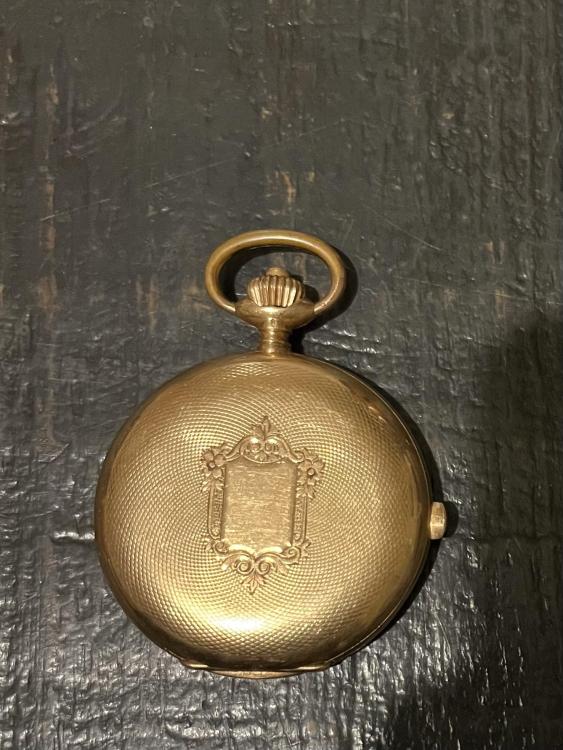
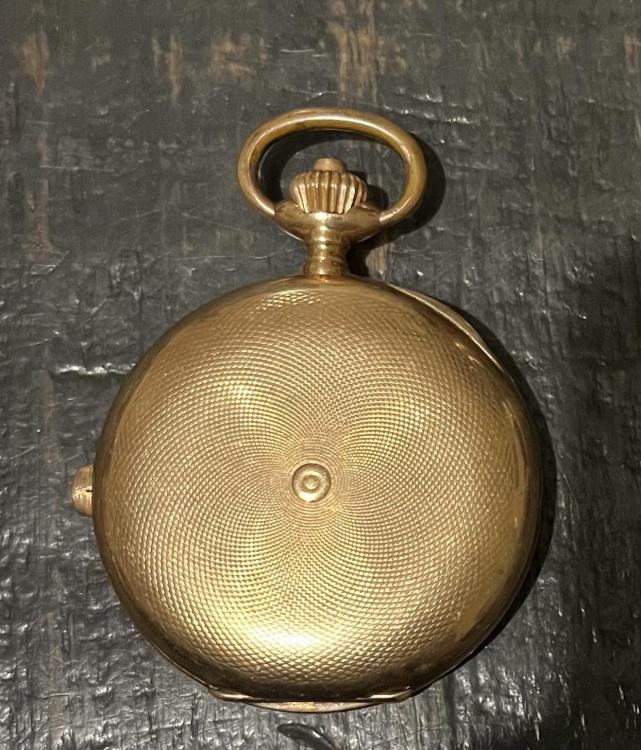
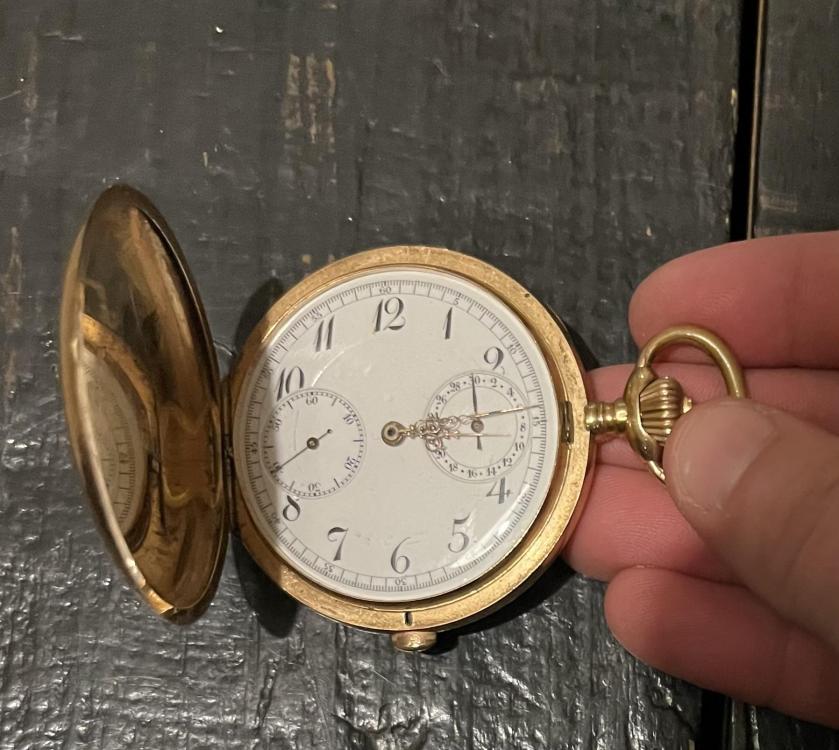

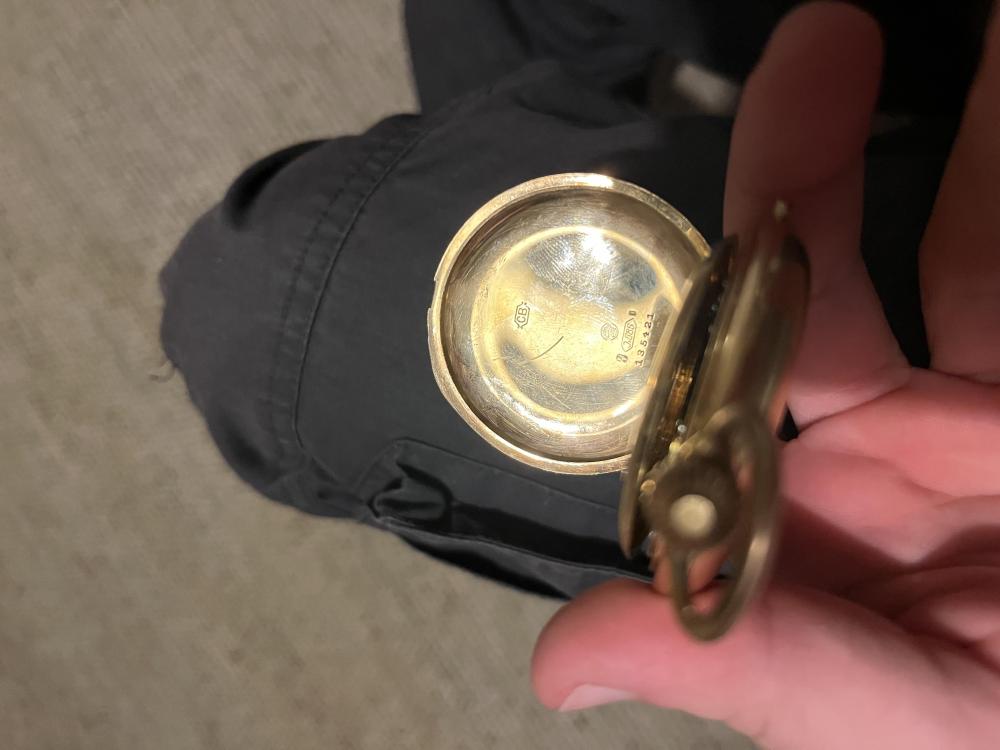
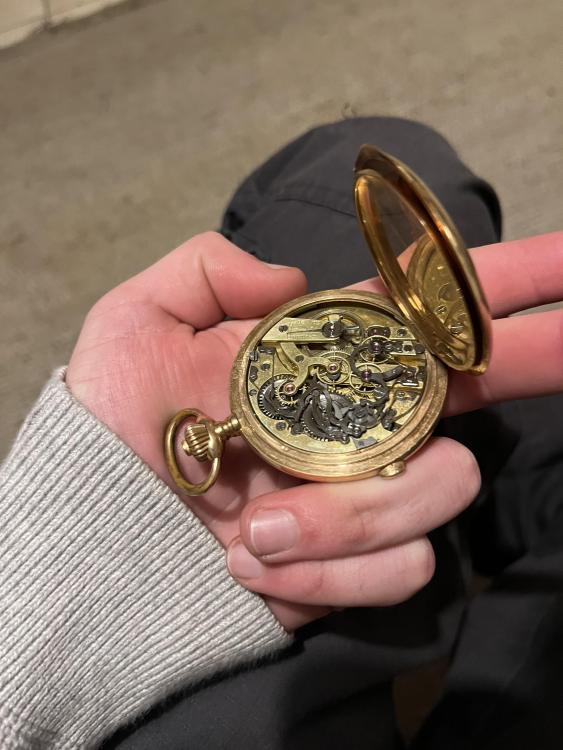
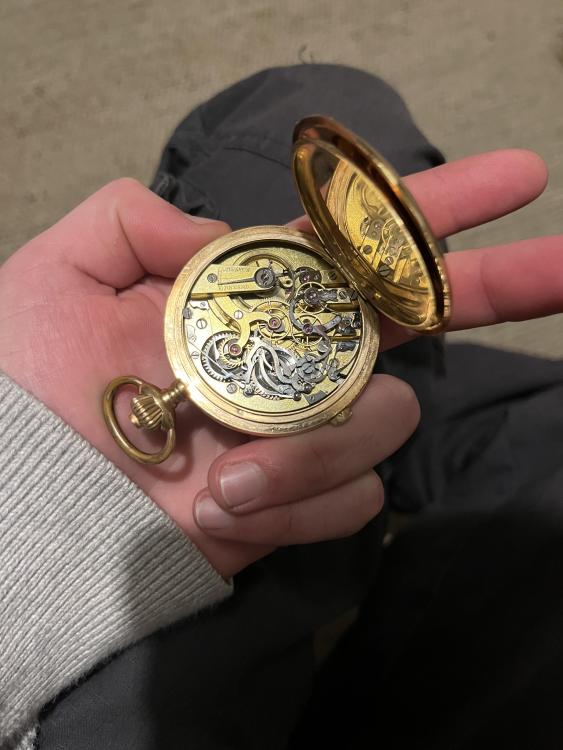
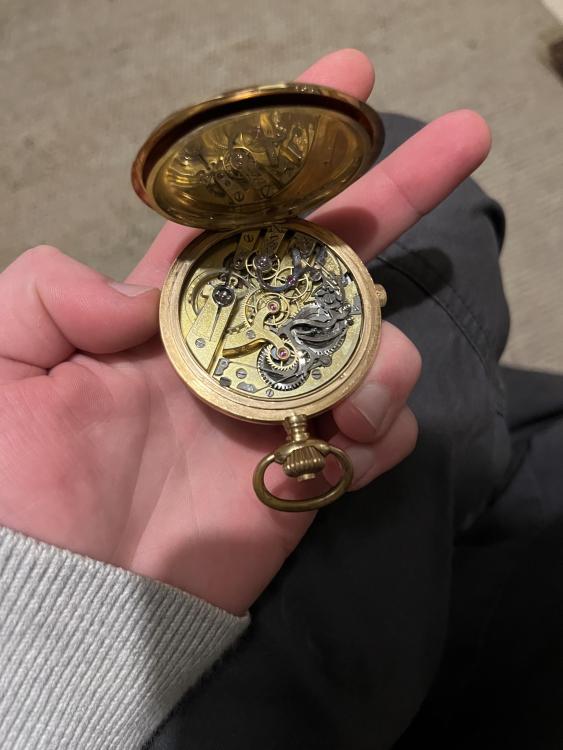
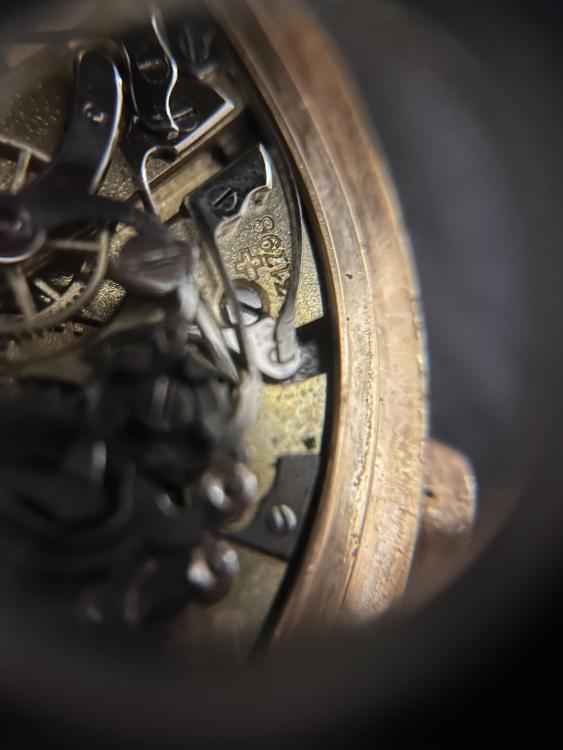
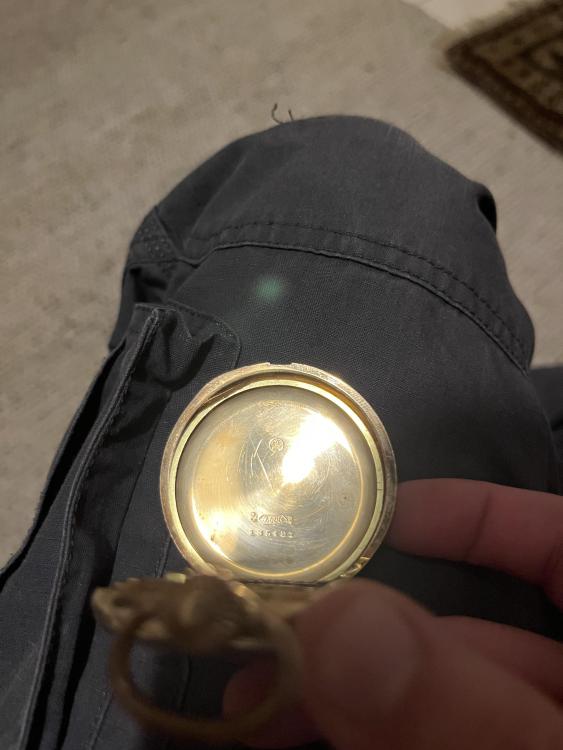
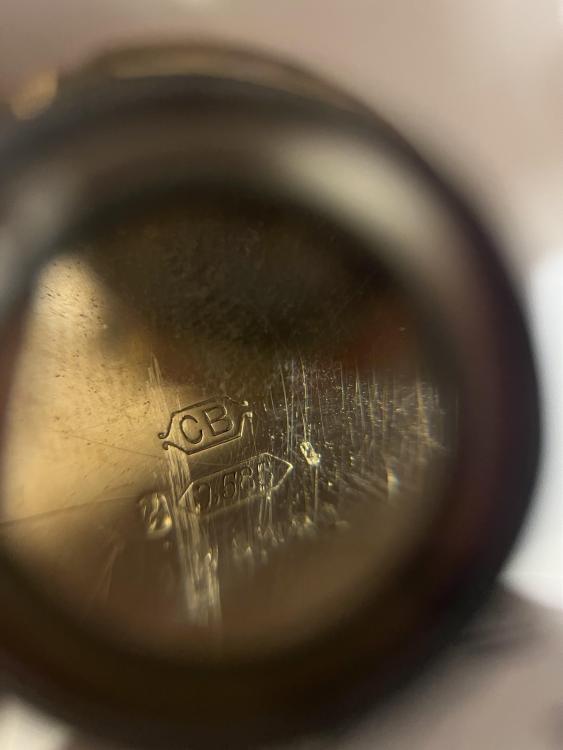
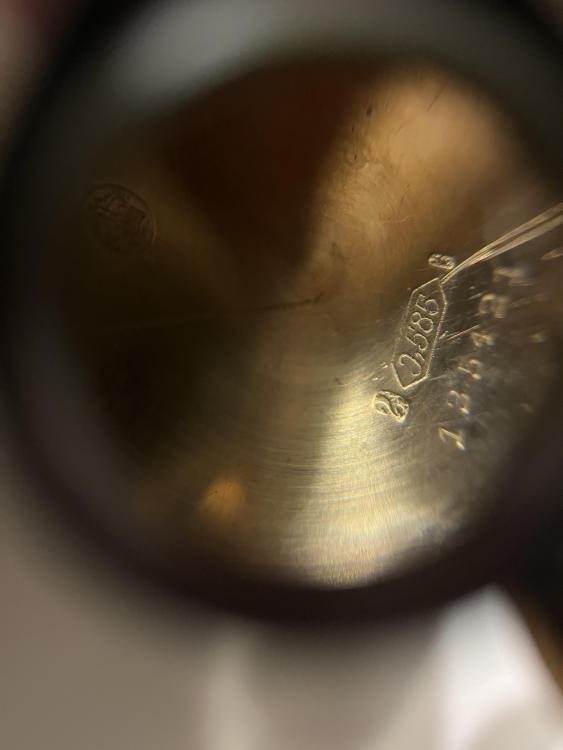
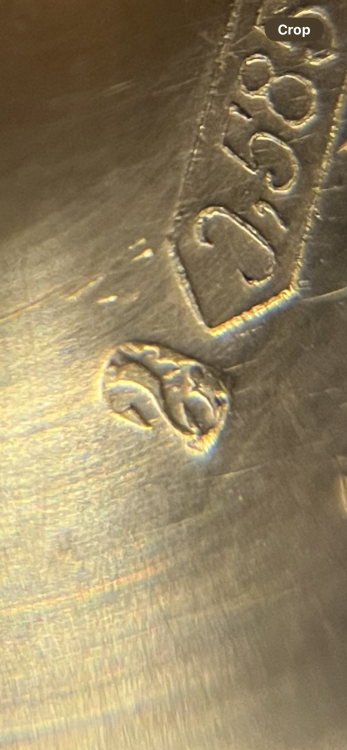



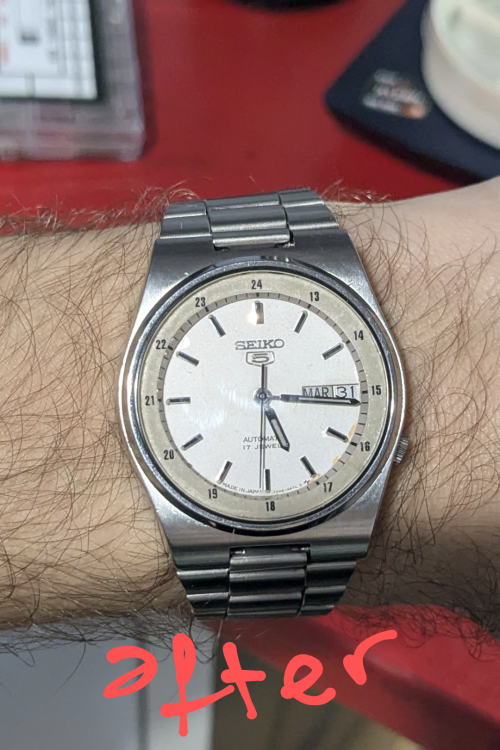
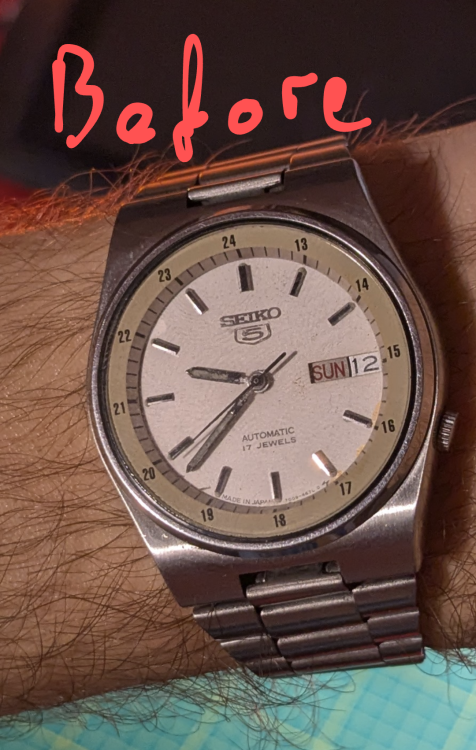
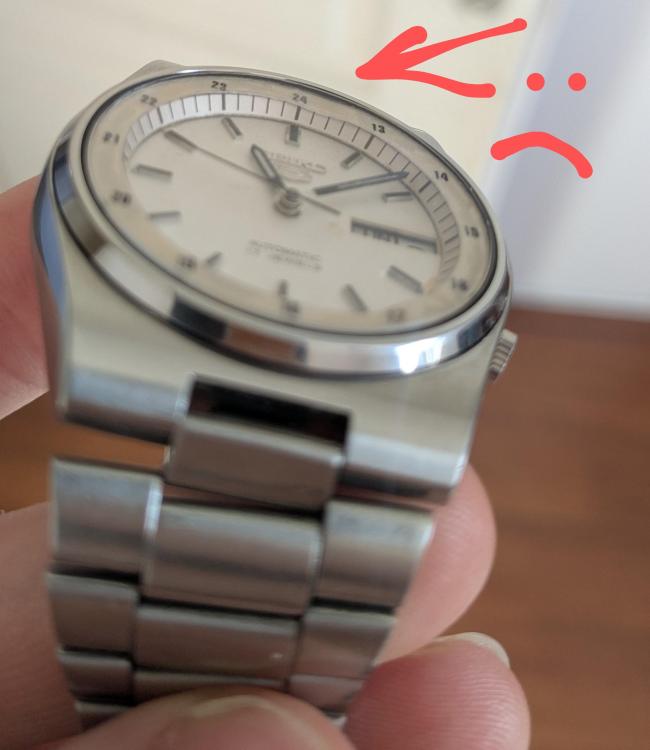
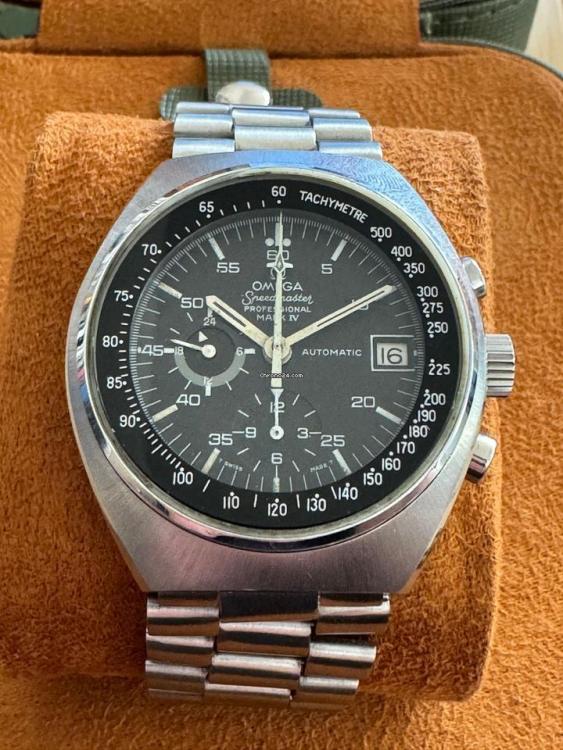
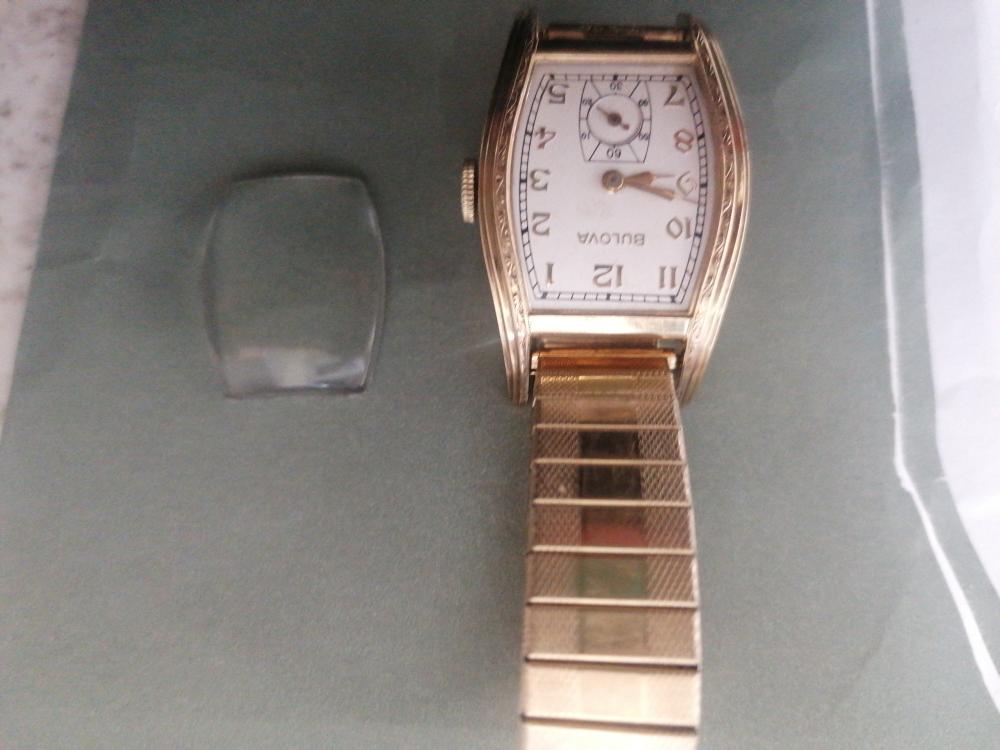
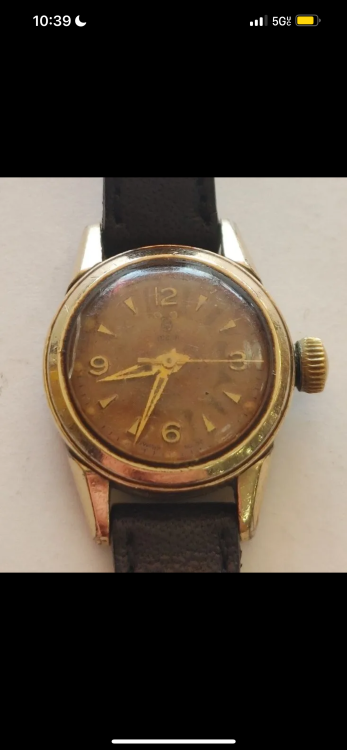
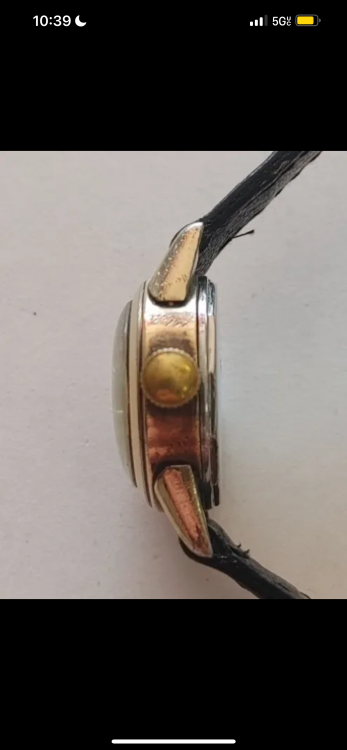
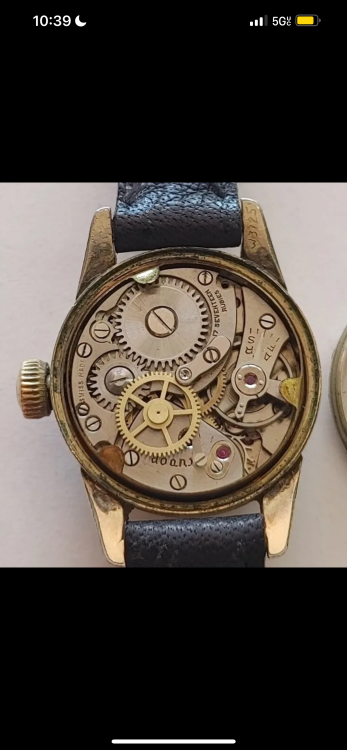
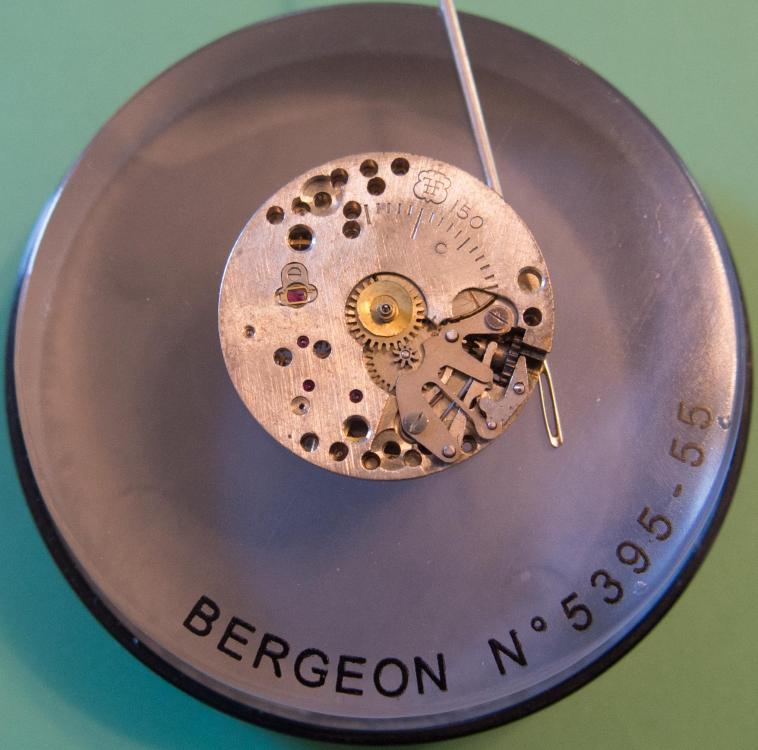

.thumb.jpg.dca3f05d6011d81aef34cb662ee12a9f.jpg)
.thumb.jpg.74e93eb82bdb9171176fa73dde116317.jpg)

